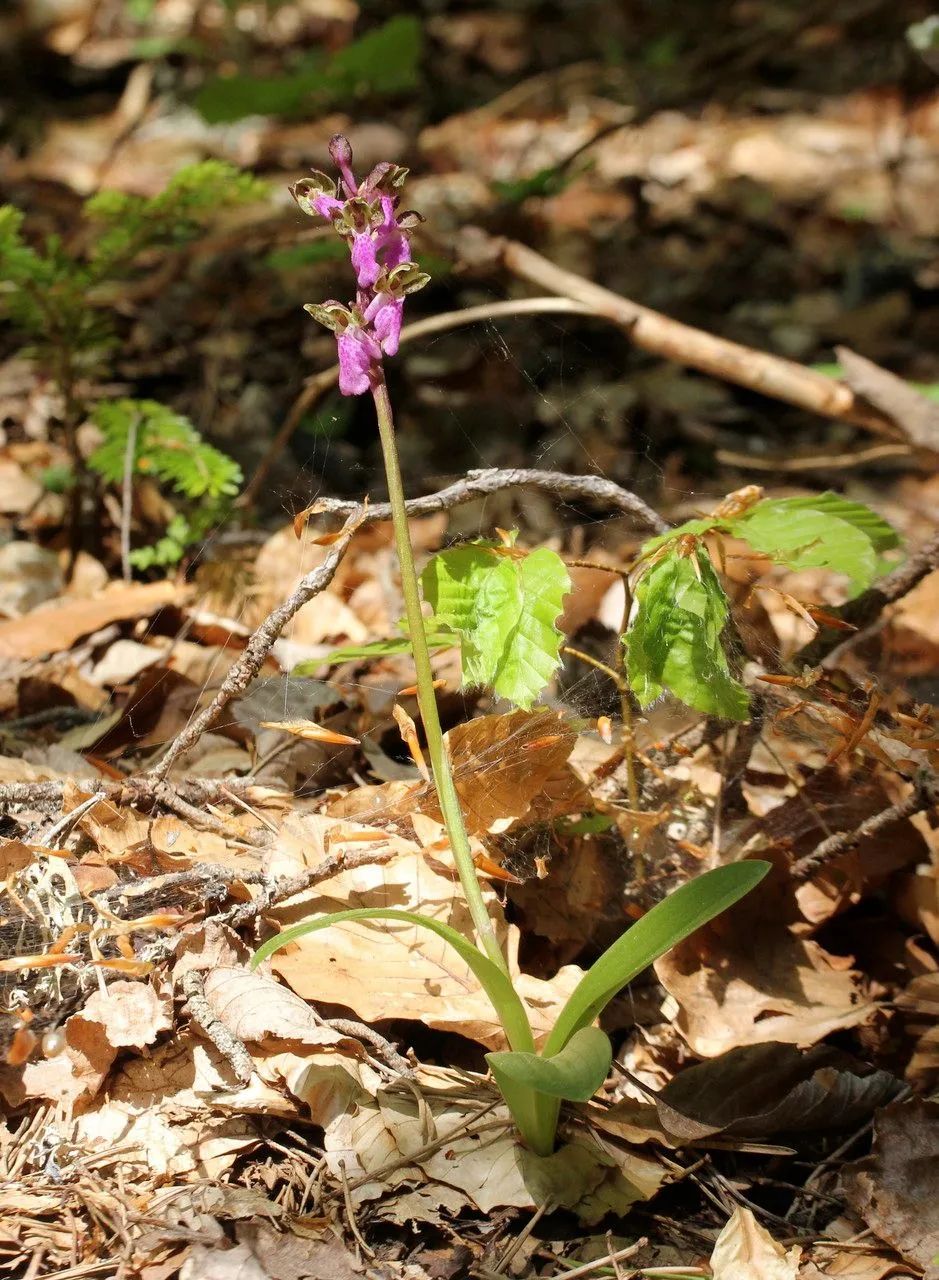
Author: Saut. ex W.D.J.Koch
Bibliography: Syn. Fl. Germ. Helv.: 686 (1837)
Year: 1837
Status: accepted
Rank: species
Genus: Orchis
Vegetable: False
Observations: Sweden (Gotland), E. Spain to Caucasus, NW. Africa
Spitzel’s orchid, scientifically known as Orchis spitzelii, is a captivating species belonging to the Orchidaceae family. First documented in the Syn. Fl. Germ. Helv. (1837) by the botanists Sauter and Wilhelm Daniel Joseph Koch, this unique orchid thrives in various regions of Europe and North Africa, displaying an impressive adaptability to diverse climatic conditions.
Habitat and Distribution:
Spitzel’s orchid is primarily found in the limestone-rich terrains of Gotland in Sweden. It extends its presence from eastern Spain all the way to the Caucasus, demonstrating a significant range. Additionally, the species has been observed in the northwestern regions of Africa, highlighting its versatility in different environmental settings.
Morphology:
Orchis spitzelii typically showcases a fascinating morphology that is characteristic of many orchids. The plant produces striking flowers that captivate botanists and nature enthusiasts alike. Each bloom is intricately constructed, with a distinctive structure that aids in its pollination strategies. The orchid’s vibrant hues and delicate form make it a standout among its peers in the wild.
Growth and Ecology:
Spitzel’s orchid prefers calcareous soils, often thriving in meadows, grassy slopes, and open woodland areas where sunlight and soil composition match its specific needs. The plant has adapted well to the climatic variations in its distribution range, from the cooler, temperate zones of Sweden to the more arid and warm regions of North Africa.
Conservation Status:
Though not extensively studied, the distribution of Orchis spitzelii suggests that while the plant is relatively widespread, its habitats are susceptible to changes due to human activities and climate change. Conservation efforts are essential to preserve these unique orchids, ensuring they continue to grace their natural environments and contribute to the biodiversity of their respective ecosystems.
Conclusion:
Spitzel’s orchid is a remarkable example of nature’s beauty and resilience. Known by its scientific name Orchis spitzelii, the species spans a variety of landscapes across Europe and North Africa, captivating those who encounter its distinct and elegant blooms. Through continued observation and conservation, this species can continue to flourish and be appreciated by future generations.
Deu: spitzels knabenkraut
Swe: alpnycklar, gotlandsnyckelblomster
Nno: alpenøklar
Nob: alpenøkler
En: Spitzel’s Orchid
Fr: Orchis de Spitzel, Orchis à corne courte
De: Spitzels Knabenkraut, Spitzels Orchis
It: Orchide di Spitzel
Nb: Alpenøkler
Nn: Alpenøklar
Sv: Alpnycklar, Gotlandsnyckelblomster
: Spitzel’s orchid
Taken May 30, 2016 by Tela Botanica − Michel MONTEIL (cc-by-sa)
Taken Jun 3, 2017 by Tela Botanica − Rolland DOUZET (cc-by-sa)
Taken Jun 3, 2017 by Tela Botanica − Rolland DOUZET (cc-by-sa)
Taken Jun 7, 2019 by Tela Botanica − René Moulin (cc-by-sa)
Taken Jun 4, 2019 by Tela Botanica − Marie Portas (cc-by-sa)
Taken Apr 29, 2007 by Andrew Gagg (cc-by-sa)
Taken May 15, 2008 by Photoflora – Jean-Luc TASSET (©)
Taken Jun 4, 2019 by Tela Botanica − Marie Portas (cc-by-sa)
Taken Jan 1, 1800 by Tela Botanica − Thierry Pernot (cc-by-sa)
Taken May 30, 2016 by Tela Botanica − Michel MONTEIL (cc-by-sa)
Taken Jan 1, 1970 by Photoflora – L’Abbé COSTE (©)
© copyright of the Board of Trustees of the Royal Botanic Gardens, Kew.
Ph maximum: 8.0
Ph minimum: 7.5
Light: 9
Atmospheric humidity: 4
Soil nutriments: 2
Family: Myrtaceae Author: (F.Muell.) K.D.Hill & L.A.S.Johnson Bibliography: Telopea 6: 402 (1995) Year: 1995 Status:…
Family: Rubiaceae Author: Pierre ex A.Froehner Bibliography: Notizbl. Bot. Gart. Berlin-Dahlem 1: 237 (1897) Year:…
Family: Sapindaceae Author: Koidz. Bibliography: J. Coll. Sci. Imp. Univ. Tokyo 32(1): 38 (1911) Year:…
Family: Asteraceae Author: A.Gray Bibliography: Pacif. Railr. Rep.: 107 (1857) Year: 1857 Status: accepted Rank:…
Family: Fabaceae Author: Medik. Bibliography: Vorles. Churpfälz. Phys.-Ökon. Ges. 2: 398 (1787) Year: 1787 Status:…
Family: Aspleniaceae Author: (Cav.) Alston Bibliography: Bull. Misc. Inform. Kew 1932: 309 (1932) Year: 1932…